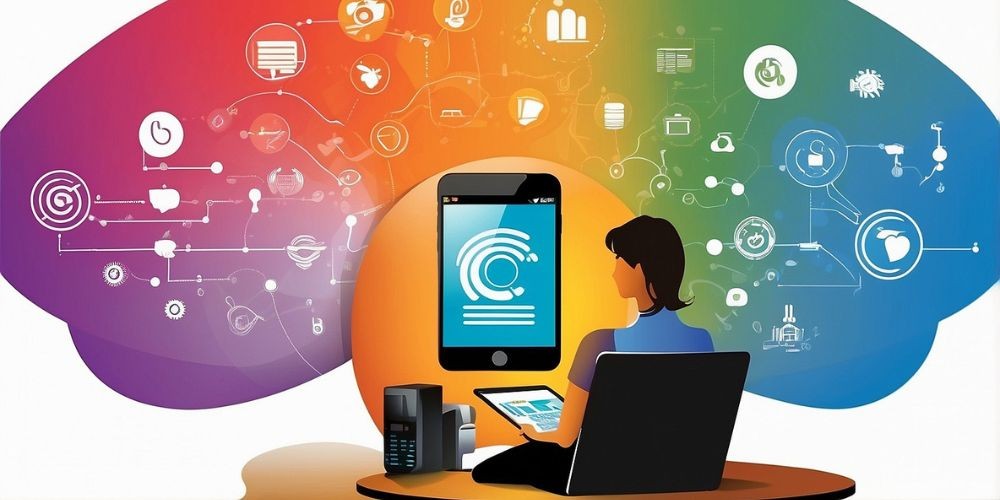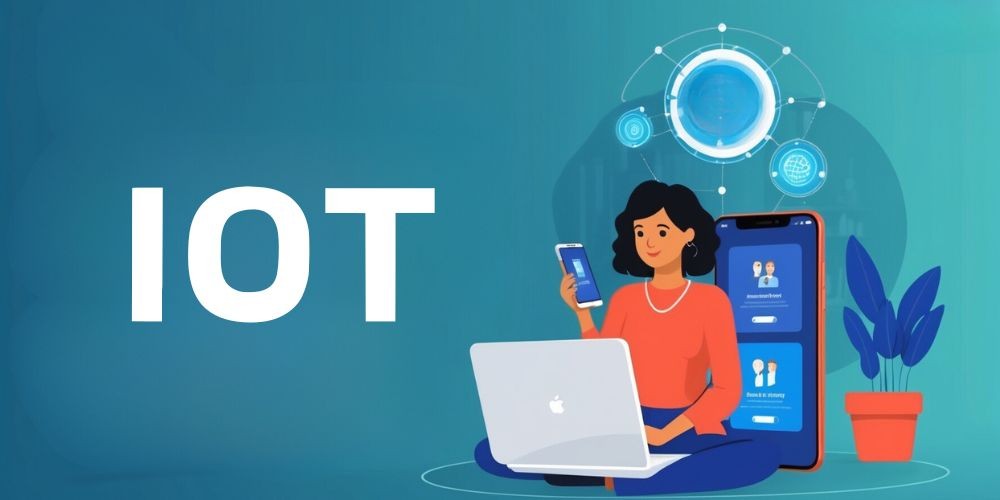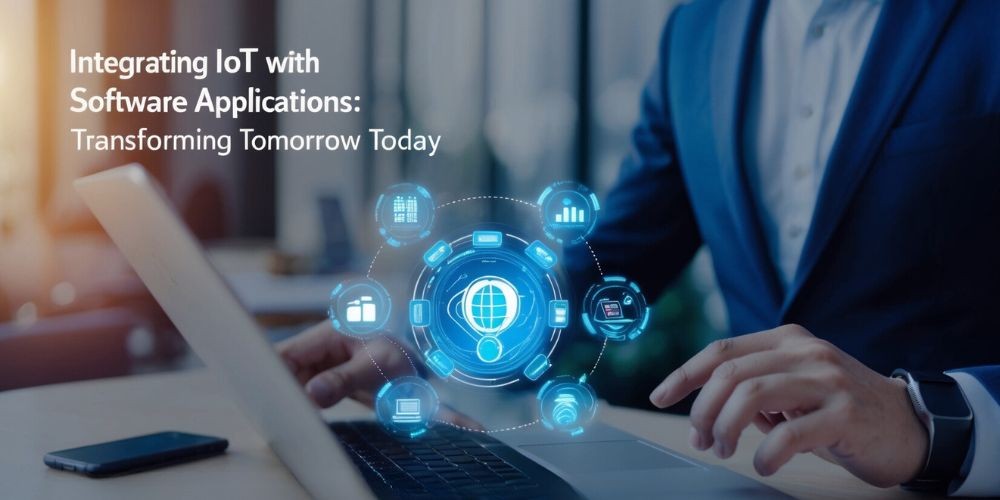Integrating IoT with Software Applications: Transforming Tomorrow Today
- Jul 30, 2024
- 1125

The digital revolution, driven heavily by the Internet of Things (IoT), is fundamentally changing how we interact with technology and the world around us. Far beyond being just a buzzword, IoT holds the promise of transforming industries, streamlining operations, and improving everyday life. Incorporating IoT into software development provides an unparalleled opportunity to build intelligent applications that enhance productivity, create seamless user experiences, and disrupt various sectors.
Understanding IoT Integration
IoT integration involves the seamless merging of IoT devices, data, and functionalities into software applications. These applications span a wide range from consumer-focused smart home systems to intricate industrial solutions. By enabling software to collect, analyze, and act based on the data generated by IoT devices, this integration allows for automation, real-time decisions, and an enhanced user experience that intuitively adapts to insights derived from data.

In essence, IoT devices are physical objects embedded with sensors, actuators, and connectivity capabilities. These devices can sense their surroundings, perform actions, and communicate their findings over networks. The true capability of IoT is realized when these devices interact with each other and with software applications, facilitating data collection and analysis that drives actionable insights and automates key processes to boost operational efficiency.
The Importance of IoT Integration
The integration of IoT into software applications is of paramount importance across numerous fields. The benefits extend well beyond basic connectivity, providing significant improvements in efficiency, user experience, scalability, and much more.
Boosted Efficiency
With IoT, both individuals and organizations can automate tasks and processes that were traditionally manual. For example, a smart thermostat can regulate energy usage by adjusting temperatures based on room occupancy. In industrial settings, IoT sensors can monitor equipment, predict maintenance needs, and reduce downtime, making the operation more resilient.
Informed Decision Making

The volume of data generated by IoT devices is immense. When integrated into software applications, this data becomes a vital asset for analytics and decision-making. For instance, retailers can assess customer behavior patterns to refine store layouts and optimize inventory management. The ability to interpret extensive data sets and turn them into actionable insights highlights the crucial role of IoT integration.
Enhanced User Experiences
Connected and smart applications provide user experiences personalized to individual needs. In smart homes, systems for lighting, climate control, and entertainment can be tailored to user preferences, while wearable technology can offer real-time insights into health and fitness. These customized experiences not only boost user satisfaction but also foster greater engagement and loyalty.
Scalability
IoT integration allows applications to scale effectively. As the number of IoT devices increases, the software can evolve to support additional data sources and devices without needing extensive redevelopment. Scalability is critical for enterprises looking to smoothly and efficiently expand their IoT ecosystems.
Core Elements of IoT Integration
Several key elements are fundamental to successful IoT integration in software applications. Understanding these components helps in creating robust, efficient, and scalable IoT solutions.

IoT Devices
The essential building blocks of any IoT system are the IoT devices themselves, which are physical entities embedded with sensors, actuators, and connectivity features. These devices gather environmental data, perform specific tasks, and communicate information to other devices and software applications. They form the foundation for data collection and exchange necessary for IoT operations.
Communication Protocols
Communication protocols are the standardized languages that allow IoT devices and software to exchange data effectively. Protocols such as MQTT, HTTP, and CoAP define the structure, format, and rules for data transmission, ensuring seamless interaction between hardware and software.
Data Processing and Storage
Given the large volume of data generated by IoT devices, efficient data processing and storage solutions are vital. Cloud platforms like AWS, Azure, and Google Cloud offer scalable infrastructure for this purpose. These platforms provide the computational power and storage capacity required to analyze and archive IoT data, ensuring its availability for both real-time and long-term use.
Application Programming Interfaces (APIs)
APIs act as connectors, facilitating interaction between software applications and IoT devices. By defining parameters and formats for this interaction, APIs ensure smooth communication and engagement among different systems and devices. They are crucial for achieving interoperability and enabling the seamless flow of information within the IoT ecosystem.
.jpg)
Analytics and Machine Learning
Analytics and machine learning play a key part in extracting valuable insights from IoT data. Predictive maintenance, anomaly detection, and informed decision-making are just a few applications where these technologies contribute to IoT integration. Machine learning algorithms have the ability to examine historical data in order to forecast outcomes and automate decision-making processes, which in turn enhances operational efficiency and system reliability.
Future Trends in IoT Integration
The future of IoT integration is incredibly promising, characterized by emerging trends and advancements that are poised to further transform how IoT is incorporated into software applications, driving even greater efficiencies and capabilities.
Edge Computing
Edge computing introduces the concept of processing data closer to its source—in this case, IoT devices—instead of relying solely on centralized cloud servers. This approach significantly reduces data transfer latency, enabling real-time analysis and decision-making. By processing data at the edge, device responsiveness and reliability are enhanced, supporting quick reactions to local conditions without dependence on distant data centers. Industries such as industrial automation, healthcare, and transportation stand to benefit immensely from the low-latency response enabled by edge computing.

5G Connectivity
The rollout of 5G networks is set to usher in a new era of IoT integration. With substantially faster data transmission speeds and significantly lower latency compared to previous generations, 5G enables IoT devices and applications to handle and transmit data at unprecedented rates. This breakthrough paves the way for more demanding, data-intensive IoT applications, including real-time industrial automation, augmented reality, and autonomous vehicles. Furthermore, the low latency of 5G is crucial for enhancing user experiences, ensuring that IoT devices can communicate and respond promptly.
AI and Machine Learning Integration
The integration of artificial intelligence (AI) and machine learning with IoT is poised to revolutionize data processing and analysis. As these technologies advance, they will assume an increasingly critical role in managing IoT data. AI-driven algorithms can sift through vast datasets generated by IoT devices to uncover valuable patterns and insights. This capability enhances the intelligence and predictive power of IoT applications, facilitating real-time decision-making and automating complex tasks.
Blockchain for Enhanced Security

Blockchain technology, known for its transparency and security, holds significant potential for fortifying the security of IoT data. Blockchain provides a secure and traceable record of data transactions, ensuring that each and every transaction is safely recorded in a decentralized ledger across a network of nodes. Thus, it is extremely difficult for attackers to modify or manipulate data, which promotes trust between network users and preserves the integrity of IoT data.
Supporting Sustainability
The integration of IoT is instrumental in advancing environmental sustainability efforts. Businesses and organizations can optimize resource usage, resulting in more efficient operations. This includes reducing energy consumption through automated control of lighting, heating, and cooling in smart buildings and factories. Additionally, IoT insights can help minimize waste by optimizing supply chains and manufacturing processes. By enabling data-driven decisions that support sustainable practices, IoT integration significantly contributes to sustainability initiatives across various industries and sectors.
Conclusion
Integrating IoT with software applications represents a transformative force that is revolutionizing industries and enhancing daily life. By connecting and harnessing the data generated by IoT devices, businesses and consumers alike can make informed decisions, automate processes, and create personalized experiences. As technology continues to evolve, the future of IoT integration promises even greater capabilities, underscoring the importance of embracing IoT in software as a necessity in the rapidly advancing digital landscape.